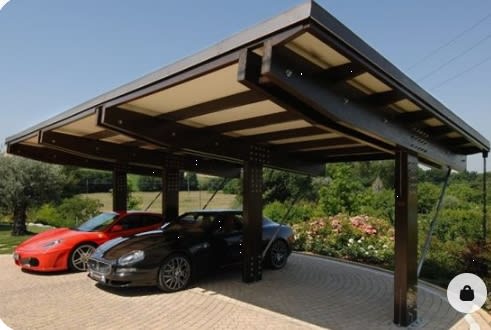StrucPatholgst
Structural
- Jan 23, 2013
- 158
Have a client that proposed an idea for his deck. His house cantilevers two feet at the second floor, and he wants a long narrow 8' wide second-floor deck along the rear of the home. Originally he wanted zero deck columns, but with the width he's asking for, that will not be economically feasible for him. He now wants a minimum number of columns, and suggested either v-shaped or t-shaped supports every 12 feet. Since building code in his town won't allow a ledger at the rim joist of the house cantilever, the whole thing has to be self supporting.
My question has to do with load cases. Normally your load cases address the joists, beams, etc. And if you just look at tributary area loads, the whole thing works great. But there will be unbalanced loads (folks standing along the railing, etc.) that will impart moment on the footing. Is there a standard anywhere regarding the degree of unbalanced loading to be accounted for on a deck or balcony? A bunch of 250 pound men standing shoulder to shoulder along the deck railing is roughly 60 psf. I would think 60 psf live load for the outer half of the tributary area would be enough to address the moment with the proposed support scheme. Any thoughts?
Here's what he's suggesting:

My question has to do with load cases. Normally your load cases address the joists, beams, etc. And if you just look at tributary area loads, the whole thing works great. But there will be unbalanced loads (folks standing along the railing, etc.) that will impart moment on the footing. Is there a standard anywhere regarding the degree of unbalanced loading to be accounted for on a deck or balcony? A bunch of 250 pound men standing shoulder to shoulder along the deck railing is roughly 60 psf. I would think 60 psf live load for the outer half of the tributary area would be enough to address the moment with the proposed support scheme. Any thoughts?
Here's what he's suggesting:




